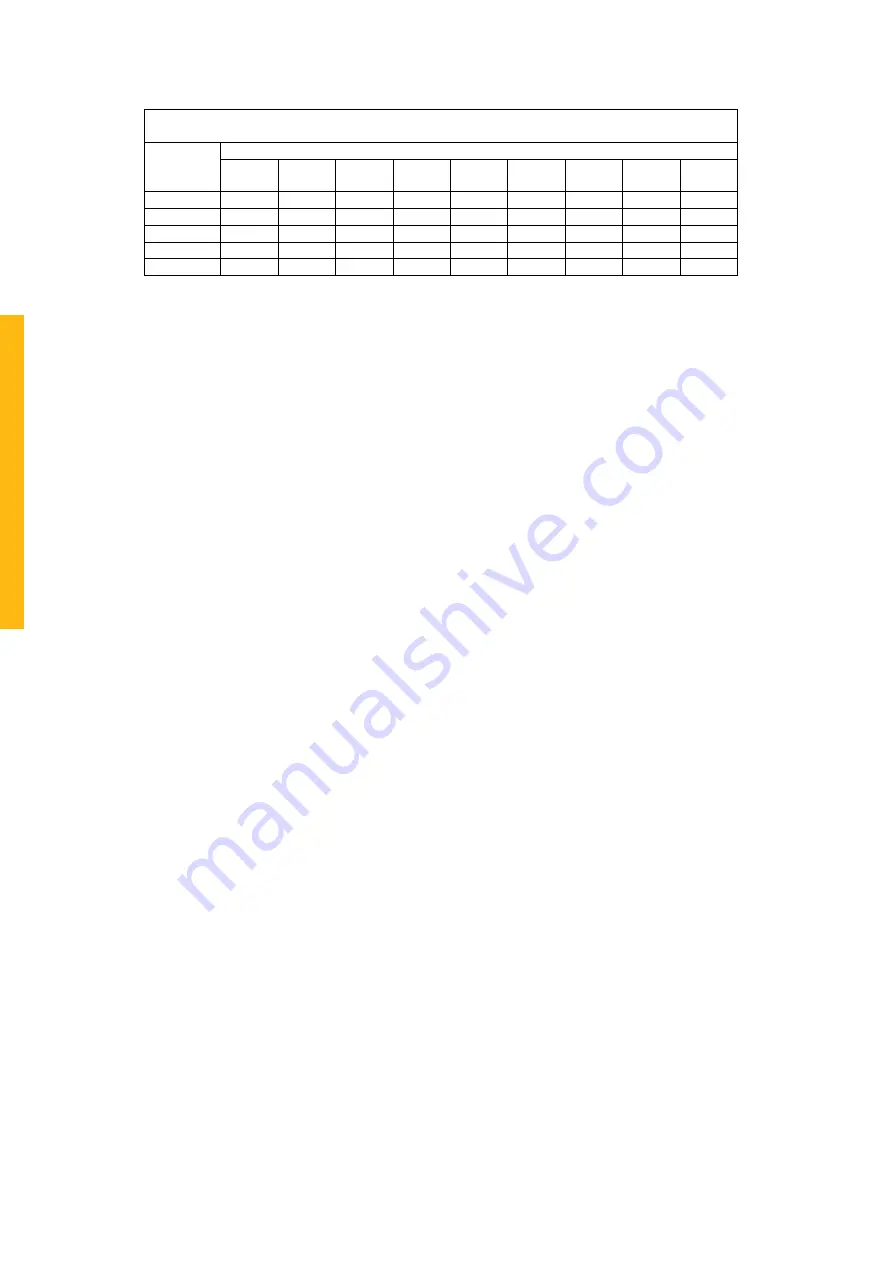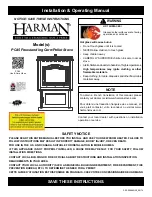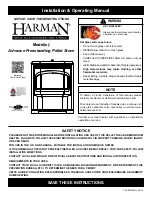
24
Height of chimney on the roof at a horizontal distance A measured from the ridge
Horizontal distance A from the ridge, in metres
Roof with
slope X
On the
ridge
0.5 m
0.75 m
1 m
1.25 m
1.5 m
2 m
3 m
4 m
25
o
0.5
0.75
0.85
1.0
1.1
1.2
1.6
2.5
3.3
30
o
0.5
0.85
1.2
1.6
2.0
2.4
3.2
4.9
6.5
35
o
0.5
1.0
1.8
2.4
3.0
3.6
4.8
7.3
10
40
o
0.5
1.2
2.4
3.2
4.0
4.8
6.4
10
13
45
o
0.5
1.5
3.0
4.0
5.0
6.0
8.0
12
16
• At the time of placing the stove, the chimney flue
must be clean, leak-proof and without obstructions,
and must have a diameter of 150 mm.
• Any bends in the flue tube must not exceed 45
degrees.
• Ensure that the chimney tube can discharge the flue
gases adequately, properly and safely.
• The values for calculating the chimney tube is given
in the section on Technical Information, page 24.
Fire Safety
For reasons of fire safety is it important to observe the
instructions below before installing the stove.
1. If the floor around the stove is made of combustible
material, you must use a floor slab.
The floor slab must measure at least:
- 50 cm from the stove on the front side of the door
- 30 cm from the stove on the sides of the door.
2. Keep at least a distance of 80 cm between the stove
and combustible objects such as curtains, wooden
objects (cupboards and paintings) and glass objects.
Keep the same distance from the flue tube.
3. Wooden construction parts within the radiation range
of the stove (80 cm from the exterior of the stove) must
be covered with fireproof material.
4. If the flue tube goes through a ceiling and/or roof
that consist of flammable materials, the ceiling and
the roof must be covered with fireproof materials all
around (about 80 cm). Pay also attention to joisted
floor layers and any electric wiring.
5. Keep a distance of at least 50 cm (in all directions)
between the stove and supporting steel construction
parts.
6. Shield off all combustible materials within a radius of
80 cm from the stove openings with non-combustible
materials.
7. Never cover the chimney breast with combustible
material (e.g. paper covering).
8. The wall behind the stove must consist of, or be
insulated with, fire-proof materials. The insulation
material must resist a temperature of 700 °C and
have a density of 80 kg/m3. Please see for insulation
materials table page 30).
9. Avoid heat transmission when placing the stove. Heat
transmission of a burning stove can penetrate the wall
and even cause fire damage on the other side of the
wall. Prevention is better than cure.
Installation
The Diamant stove is tested in accordance with the
international EN 13240 standardization and has an extra
additional standardization for optimally environment-
friendly heating devices related to flue gases (Section
15a B-Vg. Des BmfWA). The stove can be connected to
a flue tube to which several stoves are connected. The
flue tube has a diameter of 150 mm.
Supply of combustion air
The stove must have a sufficient fresh supply of
combustion air. To avoid draft, make if necessary an
extra air supply opening as close to the stove as possible.
An extra air supply opening is definitely required if:
• the room has a heat recovery system.
• the room has a central exhaust system.
• the same space has a cooker hood.
The air supply opening must be sealable if it goes through
a fire-resistant wall. If there are several heating devices
in the same room there must be enough air openings to
guarantee proper combustion.
External air supply
The tube for supplying fresh outside air has a diameter
of 150 mm. The air supply duct can be placed with a
connection at the rear or at the bottom. If the external
air supply duct goes through a fire-resistant wall, the
duct must be sealable. If the duct is longer than 1 metre
including a 90° bend, the diameter of the duct must be
bigger.
Connecting the hearth
The Diamant wood-burning stove is heavy. The standing
model weighs 160 kg, including the 2 metre flue tube.
Verify whether the wall or the floor onto which the
stove is installed is strong enough to hold the weight.
Follow the instructions given in the previous chapter on
‘Preparation’ before installing the stove. Protect the floor
during mounting the stove, and mind your back.
















































